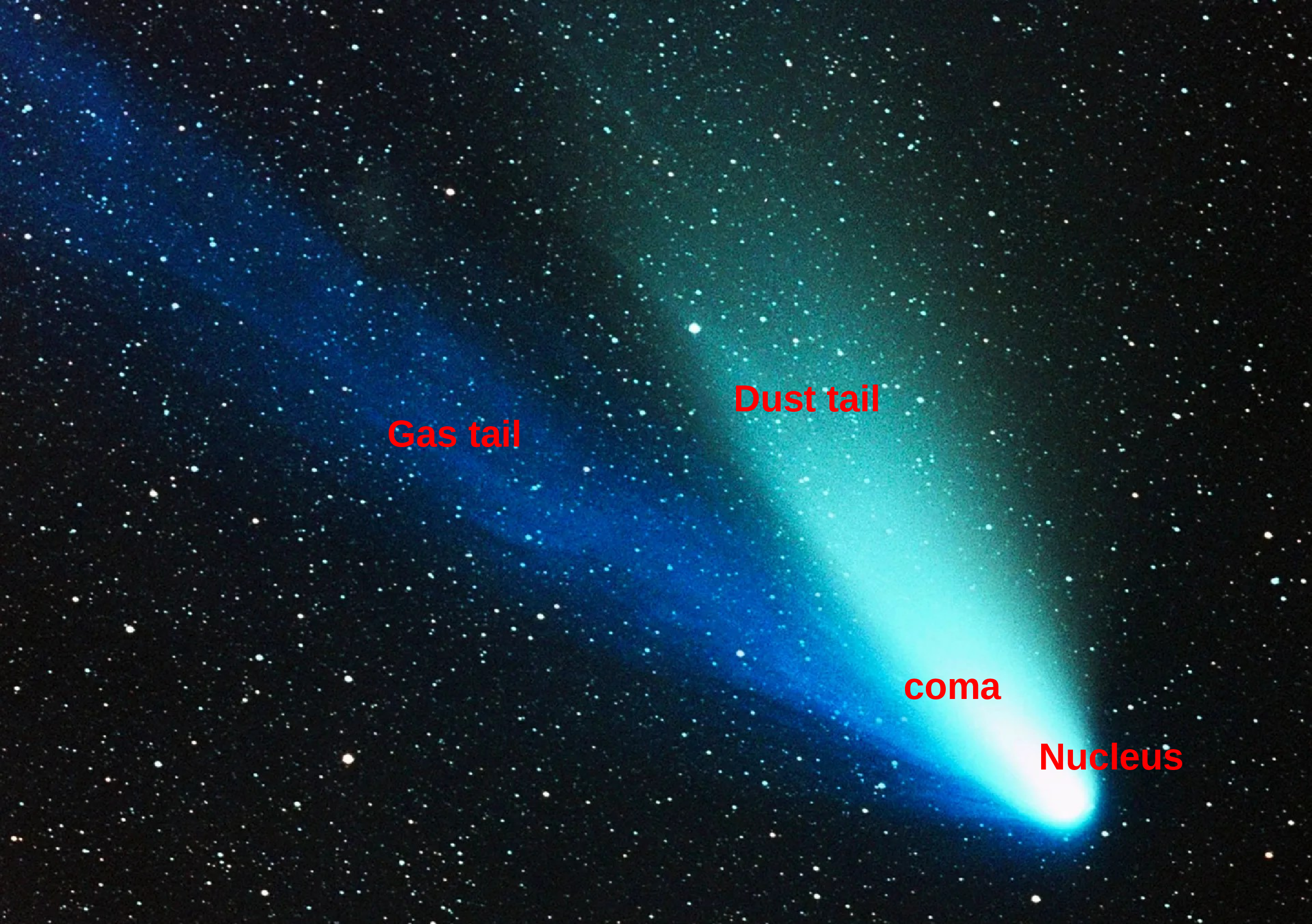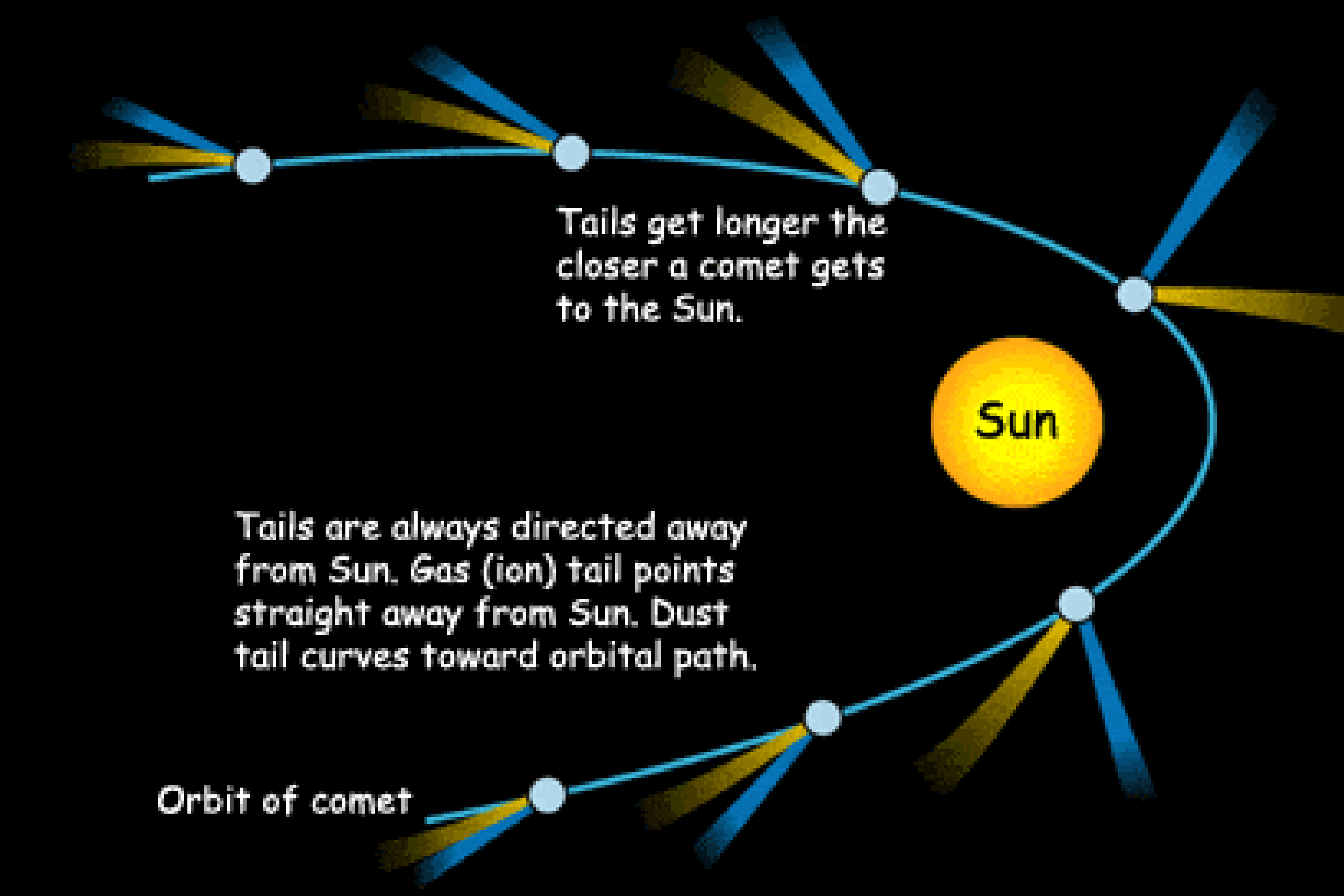Subsection 12.1 Debri Belts
Asteroids are small, rocky objects that orbit the sun. There are millions of asteroids in our solar system, ranging in size from tiny pebbles to massive rocks several hundred kilometers across. Most asteroids are found in the asteroid belt, [Figure 12.0.1.(a)] a region of space between Mars and Jupiter. Asteroids are thought to be remnants from the early solar system, left over from the formation of the planets. Studying asteroids can give us insights into the formation and evolution of the solar system, as well as provide clues about the potential hazards that these objects pose to our planet. Meteoroids can come from various sources, including the asteroid belt. Small rocky objects in asteroids belt sometimes collide with each other and create meteoroids. However, meteoroids can also come from other sources, such as comets or other objects in space. Once a meteoroid enters the Earth’s atmosphere, it is called a meteor or shooting star.
A meteor shower occurs when the Earth passes through a trail of debris left behind by a comet or asteroid. As the Earth moves through this debris field, the small particles, called meteoroids, enter the Earth’s atmosphere at high speeds and burn up, creating streaks of light in the sky that we call meteors or shooting stars. Meteor showers can occur at various times throughout the year, and they are often named after the constellation that appears to be the source of the meteors (the radiant). Some of the most well-known meteor showers include the Perseids (in August), the Leonids (in November), and the Geminids (in December).
The Kuiper Belt [Figure 12.0.1.(a)] is a region of the solar system located beyond the orbit of Neptune, extending from about 30 to 50 astronomical units (AU) from the Sun. It is a vast region of space containing many small icy objects, including dwarf planets such as Pluto, Haumea, Makemake, and Eris, as well as numerous smaller bodies known as Kuiper Belt Objects (KBOs). The Kuiper Belt is thought to be the source of many short-period comets, which are believed to be icy bodies that originate from this region and are gravitationally perturbed by the gas giants, particularly Jupiter.
The Oort Cloud [Figure 12.0.1.(b)] is a theoretical region of the outer solar system that is thought to be the source of most long-period comets. It is believed to extend from about 2,000 to 100,000 astronomical units (AU) from the Sun, which is well beyond the Kuiper Belt. The Oort Cloud is composed of icy objects, including comets, that are thought to have formed in the early solar system and were gravitationally scattered to the outer reaches of the solar system by the gas giants. The comets in the Oort Cloud can be perturbed by passing stars, which can send them on trajectories that bring them into the inner solar system, where they become visible as long-period comets. The Oort Cloud is named after Dutch astronomer Jan Oort, who first proposed its existence in 1950 based on observations of comets.

4
www.dkfindout.com/us/space/solar-system/comets/
5
simple.wikipedia.org/wiki/Comet
Comets are celestial bodies that orbit the sun and are primarily composed of ice, dust, and rock [Figure 12.1.3.(a)]. They are often referred to as "dirty snowballs" because of their composition. When a comet approaches the sun, its ice begins to vaporize, releasing gas and dust that form a glowing coma, a temporary atmosphere around the nucleus. The solar wind and radiation pressure from the sun cause the coma to form a tail that points away from the sun. Comets can have highly elliptical orbits [Figure 12.1.3.(b)] that take them far from the sun and then back towards it, sometimes taking thousands of years to complete a single orbit. Many comets are believed to originate in the Kuiper Belt, a region beyond Neptune that contains icy bodies and small planets. Some comets have been known to collide with planets or moons, and these collisions can have significant impacts on the celestial body’s surface. Comets have fascinated people for centuries and have been the subject of many myths and legends. They have also been studied extensively by astronomers, who use them as a tool to study the formation and evolution of the solar system.
